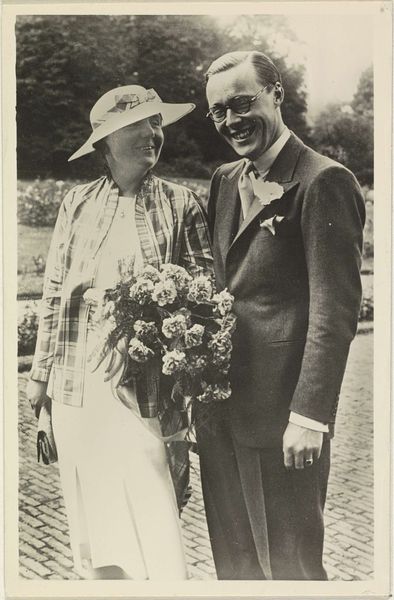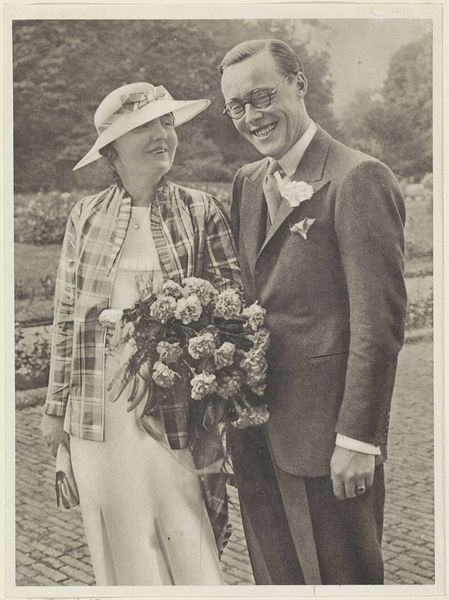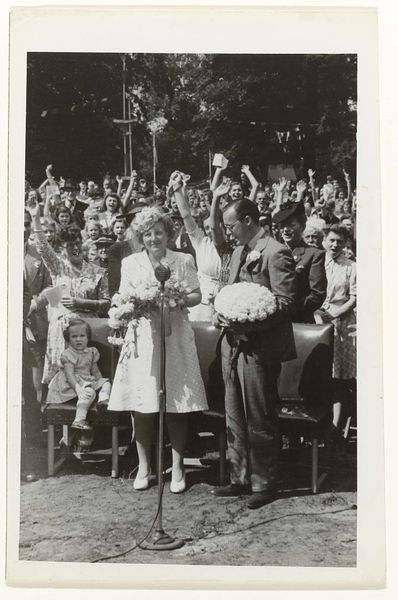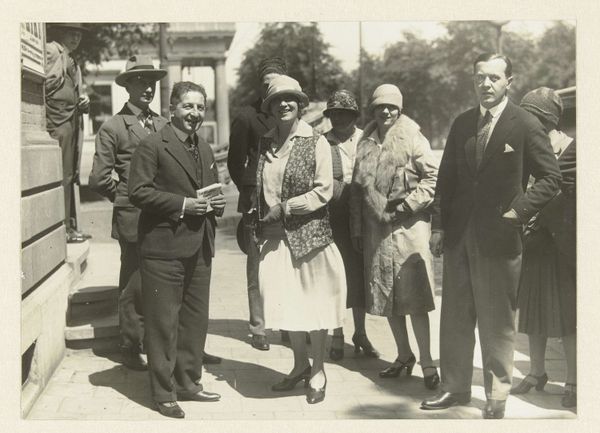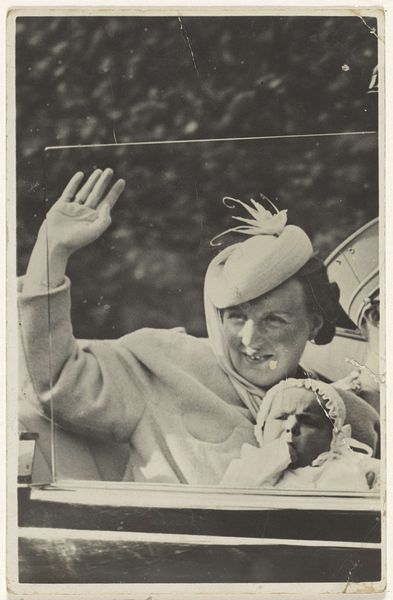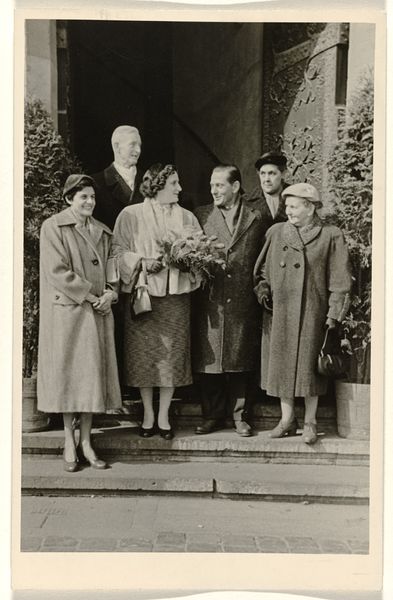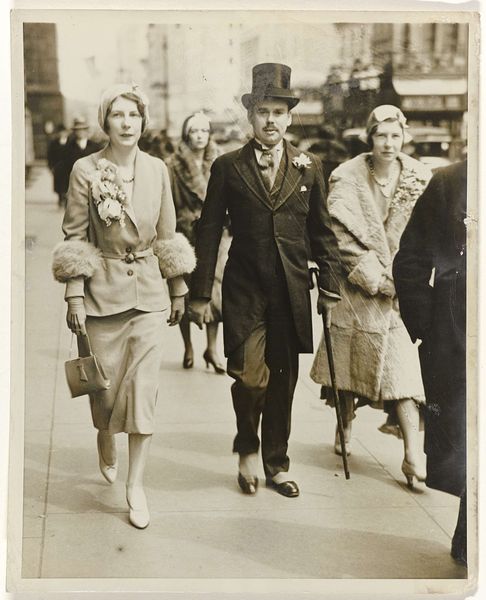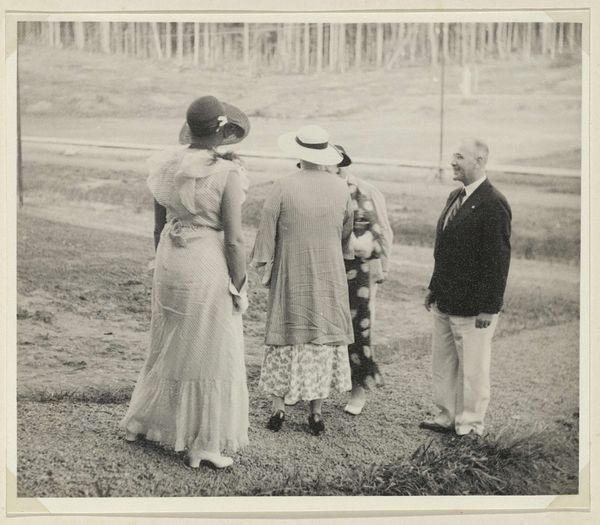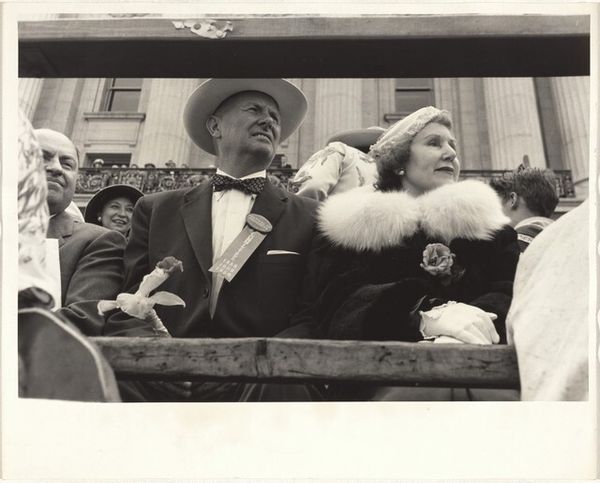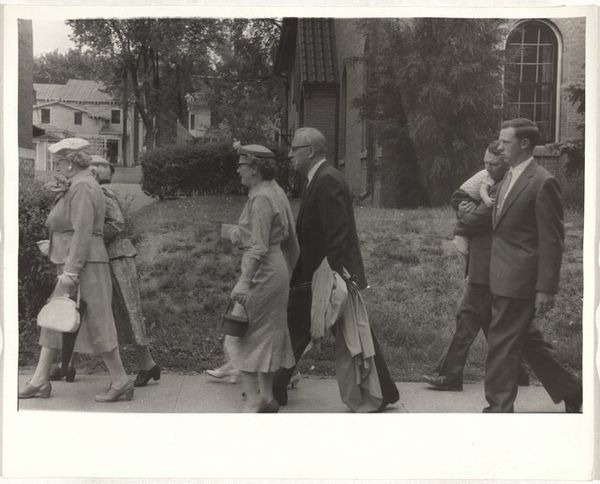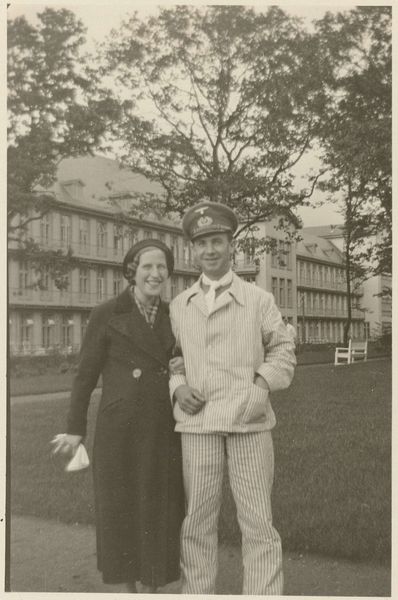
Bezoek van Juliana, koningin der Nederlanden, en Bernhard van Lippe-Biesterfeld aan het prinsenjacht Hr. Ms. 'Piet Hein' te Muiden op 28 augustus 1937 Possibly 1937 - 1938
0:00
0:00
print, photography, gelatin-silver-print
#
portrait
#
print photography
#
wedding photograph
# print
#
archive photography
#
photography
#
historical photography
#
gelatin-silver-print
#
history-painting
Dimensions: height 149 mm, width 108 mm
Copyright: Rijks Museum: Open Domain
Editor: This gelatin silver print, titled "Visit of Juliana, Queen of the Netherlands, and Bernhard of Lippe-Biesterfeld to the princely yacht Hr. Ms. 'Piet Hein' in Muiden on August 28, 1937," captures what seems like a very controlled, almost staged, public moment. What strikes me is the palpable air of formality juxtaposed against what I assume is supposed to be a celebration of national pride. What's your interpretation? Curator: The photo offers a carefully crafted image of royal accessibility. Note the setting. They're not in a palace but on a yacht in Muiden. This reflects the socio-political role of the monarchy at the time – one attempting to connect with its people during the interwar period, a period of significant social and economic upheaval. Do you think the picture creates intimacy with its audience, or the reverse? Editor: It seems both accessible and inaccessible. They’re out in the public, but there’s still a very clear separation maintained, almost enforced by the composition, don’t you think? Curator: Precisely. This relates directly to the ongoing discussions within society about power and privilege. How does the monarchy adapt and present itself in this rapidly changing world? It's a political act using a photographic image. Note also how the press can be a political pawn in image making of the state. They control their image to manipulate the narrative for their own purposes. Editor: So, it's not just a snapshot in time, but a constructed narrative? Curator: Absolutely. Consider the function of this photograph, it becomes propaganda, demonstrating to the public eye their dedication to public service. Everything from their expressions to the camera angle contributes to this image-building exercise. How effective do you find it? Editor: I guess it's a reminder that even seemingly candid photographs can be loaded with carefully planned messaging, tailored for a specific audience, whether intended to manipulate, distract, or something in-between. Curator: Exactly. I see this photograph as a complex negotiation between tradition, power, and the evolving role of the monarchy in a democratic society. A lot to take away from what appears as simple portraiture, isn’t it?
Comments
No comments
Be the first to comment and join the conversation on the ultimate creative platform.
